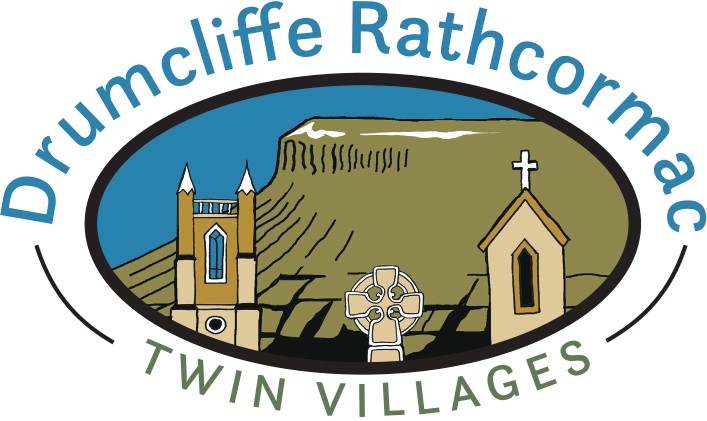A Brief Snapshot of Rathcormac and its Environment
By Dr. Don Cotton
Geology
Benbulben and King’s Mountain – Carboniferous limestone cliffs with some sandstone capping (c.320 million years old). The whole area of lowland Rathcormack is underlain by Carboniferous limestone.
Geomorphology
Limestone can have caves and underground waters. The Drum road is a dry valley (no surface water streams) with evidence that underground streams flow down valley. There is a spring in the Council Yard in Kintogher (the quarry) where some of this water surfaces. Drumcliff Bay Estuary (SAC) is a flat area of fields and ditches that underwater when sea levels were higher, and which will most likely be underwater again should sea level rise due to global warming.
Soils and flora
Limestone gives rise to fertile soils with grassland and hedgerows being the usual flora: Hawthorn (whitethorn); Blackthorn (sloe); Ash; Elder; Bush vetch; Hogweed; Cow parsley
Fauna
Butterflies observed in the area include speckled wood, small tortoiseshell, peacock, green-veined white, holly blue
Birds observed include: blackbird, song thrush, robin, dunnock, wren, goldcrest, blue tit, great tit, coal tit, jackdaw, chaffinch, goldfinch, house martin (nests under the eve of Rathcormac church tower)
Birds seen flying over the area: peregrine falcon, chough (Note: a corncrake was sighted in Kintogher in 2010. The nesting site was protected under the Corncrake Conservation Scheme, but there have been no reported sightings since)
Mammals observed in the area: rabbit, Irish hare, stoat, badger, pine marten, fox
Local residents have also reported the following recent observations:
Sparrowhawk, Swallows, Rabbits, Cock pheasant, Doves, Kestral, Cuckoo, greenfinches, magpies, crows
Environmental issues
Loss of natural habitats due to drainage of marshes; clearing of trees along the banks of the Drumcliffe River; urban pressures and excessive development
Presences of invasive alien species such as: Japanese knotweed; snoeberry; montbretia; fuchsia
Sites of special value for wildlife
• Springfield bog
• County Council yard with spring
• Drumcliff River
• Drumcliffe Bay (Area of Conservation) and adjacent marshy fields
• Kintogher Fen (this habitat was only identified in recent years and has yet to be fully surveyed)
